#empire records soundtrack
Text

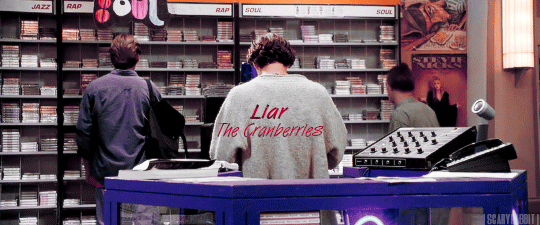

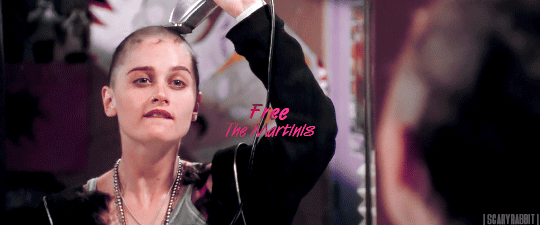





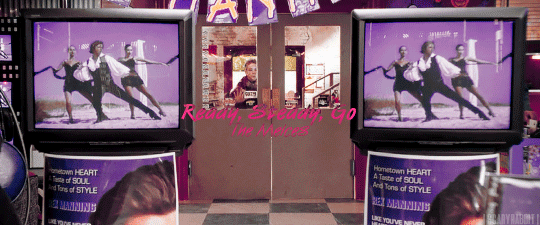





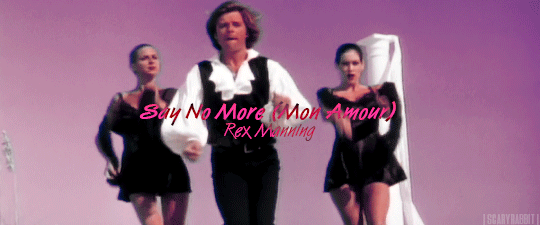
Empire Records (1995) | Soundtrack and Bonus
#empire records#empire records (1995)#empire records soundtrack#90s movies#cult film#90s nostalgia#90s music#anthony lapaglia#maxwell caulfield#rory cochrane#johnny whitworth#robin tunney#renée zellweger#renee zellweger#ethan embry#coyote shivers#brendan sexton iii#liv tyler#sillyrabbit81 gifs#scaryrabbit gifs#scaryrabbit movie gifs#filmedit
182 notes
·
View notes
Text
Now what?
Then what?
But, oh, that rock and roll, it saved my soul.
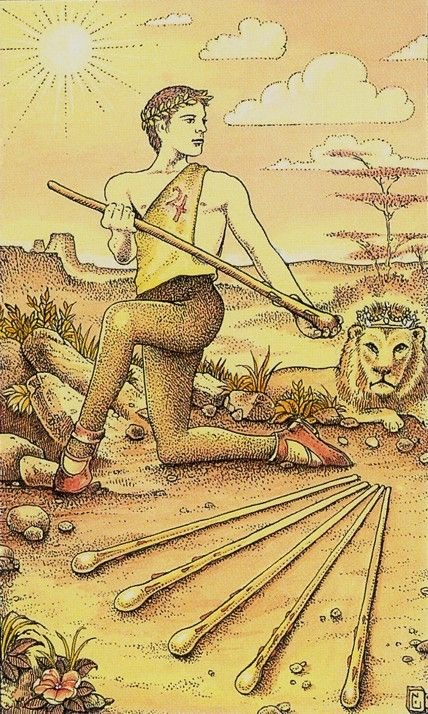
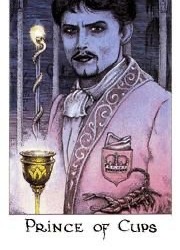
Alright. Salt monkeys caught in America. I’ll admit.
0 notes
Text

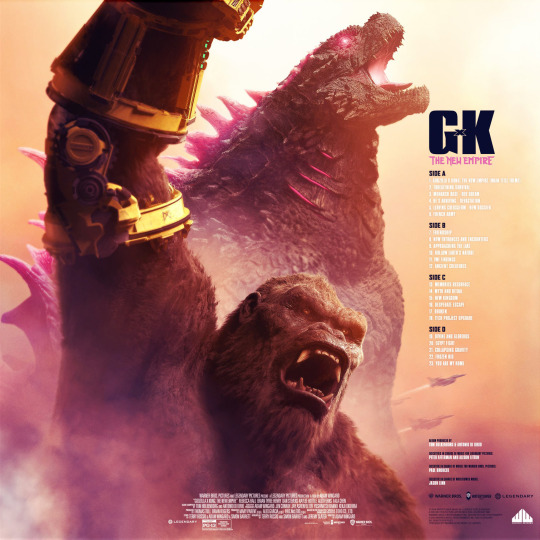


Godzilla x Kong: The New Empire's soundtrack is available on vinyl for $40 via Waxwork Records. The score is composed by Tom "Junkie XL" Holkenborg (Mad Max: Fury Road, Godzilla vs. Kong) and Antonio Di Iorio.
The 2xLP album is pressed on 180-gram colored vinyl. It's housed in a gatefold jacket with matte satin coating featuring layout and design by Matt Needle and a 12x12 art print. It's expected to ship in June.
#godzilla x kong: the new empire#godzilla x kong#godzilla x kong the new empire#godzilla#kong#king kong#waxwork records#vinyl#soundtrack#gift#junkie xl#tom holkenborg#antonio di iorio#monsterverse#matt needle
31 notes
·
View notes
Text
Sugar High - Empire Records - 1995
youtube
27 notes
·
View notes
Text
I feel so funny deep inside
When you kiss me goodbye...
🍬 Sugarhigh 🍭
💖
4 notes
·
View notes
Text
This movie still has such a baller soundtrack.
3 notes
·
View notes
Text
So Hozier just dropped an EP. Cool, love it, great as always. Now, when is he gonna officially drop But the Wages. Please, Andrew, I'll take a demo atp idc🙏
#sstfu.txt#I'll listen to that one shakey concert recording until the end of time if I have to but still#my opinion on first listen is I like too sweet a lot and empire now is giving video game soundtrack#the other too are just ok ehh#they'll probably grow on me all his songs usually do
1 note
·
View note
Text
"The atrocities in Zombie are still happening today."
The Cranberries' Noel Hogan and Fergal Lawler join Kyle Meredith With to talk about 1994's No Need to Argue, riots, couches, & appearing on the soundtracks for "Clueless" and "Empire Records".
#thecranberries #DoloresORiordan #90s
0 notes
Text
I am not a records person but one of this year’s albums for record store day is Hello Mary Lou Prom Night 2 soundtrack???? I have a mighty need
0 notes
Text
Trent Reznor and Atticus Ross have a plan to soundtrack everything
Trent Reznor and Atticus Ross – best friends and Nine Inch Nails bandmates – found unlikely creative fulfilment (and a couple of Oscars) by reassessing what they had to offer as musicians. Now they’re thinking even bigger, and imagining an artistic empire of their own making
By Zach Baron
Photography by Danielle Levitt
Every weekday, Trent Reznor makes his way from his house, a cottagey sprawl behind a white wall in a canyon on Los Angeles’s Westside, to a studio he’s built in his backyard. There he meets his best friend, bandmate, and business partner, Atticus Ross, and they get to work. Reznor and Ross observe the same hours, Monday to Friday, 11am to 7pm. “We show up,” Reznor told me. “We’re not late. We’re not coming in to start to fuck around.” It’s a methodical, orderly existence that Reznor could not have foreseen in the ’90s, when he was fronting Nine Inch Nails and struggling with a drug-and-alcohol problem that was his answer to success. “I would do anything to avoid writing a song,” Reznor said. “I’d rewire the studio 50 times.”
Now Reznor has a wife, Mariqueen Maandig, five children, and multiple jobs. He is sober. Since 2010, when the director David Fincher asked Reznor and Ross to score The Social Network, for which Reznor and Ross won an Oscar, the two men have had steady employment composing for film. This year, Reznor and Ross are also starting a yet-to-be-named company, built around storytelling in multiple disciplines: film production, fashion, a music festival, and a venture with Epic Games.
And then, of course, there is the oldest and perhaps still the most complicated of Reznor’s jobs: being the frontman of Nine Inch Nails. In 1988 Reznor formed what was then a one-man band; the first two full-length records Nine Inch Nails released, Pretty Hate Machine(1989) and The Downward Spiral (1994), have sold more than eight million copies. (Over subsequent years and subsequent albums, the band has since crossed the 20 million mark in sales.) In the ’90s, for a time, Nine Inch Nails were ubiquitous: a phenomenon on the level of Nirvana or Dr Dre. During that decade, the success of the band nearly killed Reznor. “I didn’t feel prepared to process how disorientating that was,” he said. “How much it can distort your personality.”
These days, Nine Inch Nails, which Ross joined as a full-time member in 2016, present a different problem – how do you make something old, something so already well-defined, new again? There are years when Reznor feels like he has the answers and years when he’s less certain. He has put the band on hiatus more than once; after the last Nine Inch Nails tour, in 2022, Reznor deliberately took a break from playing shows as well. “For the first time in a long time I wasn’t sure: what’s the tour going to say?” Reznor told me. “What do I have to say right now? We can still play those songs real good. Maybe we can come up with a new production. But it wasn’t screaming at me: this is what to do right now.”
But he and Ross still come to work, daily, in search of transcendence. “We sit in here every day,” Reznor said. “And a portion of the time organically becomes us just figuring out who we are as people and processing life and a kind of therapy session. And in those endless hours it’s come up: why do we want to do this? And the reason is because we both feel the most in touch with God and fulfilled.”
It is easy to make things when you are a teenager growing up in rural Pennsylvania, near the Ohio border, as Reznor was, and you have nothing to lose and everything to gain; it is considerably harder, once you’ve got older, and found a way to make things that people like, to keep going. It’s an old story: the act of creation can lift you up, but those sharp gifts can also destroy you, and if you make it past that, the sheer blissful regularity of life with money and a family can even you out so thoroughly that there is no friction left to work with. You look inside the cupboard and the cupboard is bare, or it’s a mansion and living inside of it is a person you’re bored of, and so you stop looking. But Reznor and Ross have never stopped looking, and the search for that magical feeling of finding something – that feeling of, in Reznor’s words, “I don’t know where it came from. I don’t know how I just did what I did, but I’ve channelled it into something that worked” – is still the thing that organises their days and their moods.
We were talking in their studio, which was low-lit and cold and full of synthesizers’ blinking lights. Reznor was on a sofa and Ross sat in a chair nearby. The two men first met in the ’90s, when Reznor signed Ross’s band, 12 Rounds, to Reznor’s Nothing Records. Soon after, they became friends, and then musical collaborators. “I was just getting sober,” Reznor said, “and I was in a pretty fragile transitional phase. And I just hit it off with Atticus right off the bat. And part of it was, he was someone who was on much firmer ground, in a mentor-y kind of way, than I was.”
Ross is two years younger than Reznor, but when they met, he’d already been through certain things Reznor was just getting around to. “I got clean when I was very young,” Ross told me. “So I had a bit more experience than him. Put it like this: I knew you could have fun without being high.”
Their friendship has been a constant in both their lives since. “I don’t know if parts of us are broken and we don’t feel good enough,” Reznor said, staring at the ceiling of the studio, “but we know if we work as hard as we can and do the best work we can, it fixes something. At the core of it, that’s what unites us creatively. On top of that, I think his take on the world and role in life helps me understand my place and not feel as detached in some ways.”
Reznor often jokes, or simply explains, that he is a “quart low” on whatever it is that makes people happy. “I think we can both, on our own devices, run below zero as a baseline,” Reznor said. “I don’t mean manic depression, I just mean we don’t take compliments well. It’s like when we won the Oscar, it was the day after: ‘Let’s take today guilt-free, kind of say fuck yeah.’ And tomorrow we’ll have settled back down to a few feet below sea level.”
In their years of collaborating with each other, both men have found some mutual reassurance – a little lift. Reznor gestured at Ross.
“I remember something he said to me – I don’t know if you want me to say this or not – in one of our talks years ago: ‘Here’s what I want today.’”
“I see what’s coming,” Ross said, nervously.
“I just want to feel OK,” Reznor said, quoting his friend. “I want to feel like I’m OK.”
One day this winter, Reznor greeted me at the door of their studio – in the course of reporting this story, I never saw him anywhere else – wearing a black hoodie made by the synthesizer company Moog, black jeans, and black running shoes. At 58, Reznor still retains the angular intensity and jet-black hair of his youth, but time and fatherhood seem to have made him quicker to smile. He looks a little like a college professor now, or an unusually-well-cared-for software engineer. He led me back, past walls of unused gear and several black-clad mannequins, all of which startled me, to their primary workspace, where Ross – a tall west Londoner (he grew up in Ladbroke Grove) with a stern face and a pleasantly reedy voice – sat at a computer, also all in black. (Once, I asked the two men whether their upcoming clothing line would feature any colour. “No,” Reznor said, incredulously. “Of course not.”)
They were on deadline for two films at the moment, including Luca Guadagnino’s forthcoming Queer. “But we’re trying not to work,” Reznor said, drily. Leaned up against one wall was a photo of the two in tuxedos, accepting the Academy Award for best original score for their work on The Social Network. Reznor had contributed to soundtracks before, in the ’90s, but he’d never formally scored a film until The Social Network.
But Reznor and Ross quickly realised that the work, in some ways, wasn’t so different from songwriting. “What do we do when we write a song?” Reznor asked. “We’re trying to emotionally connect with somebody.” Take the Mark Zuckerberg character in The Social Network:“Here’s somebody who thinks this idea is so important that it’s worth kind of fucking your friends over for it. And then realising maybe it wasn’t worth it, or I didn’t realise how I’d feel if I got what I wanted at the price of this. I can relate to that in my own language. Suddenly there’s music.”
“I’m grateful not to be as angry and frustrated and desperate as I have felt in the past,” Reznor said. “I couldn’t have predicted that I would feel this level of fulfilment.”
And Reznor found that he enjoyed the exercise of solving someone else’s problems instead of his own. “There’s something about not being the boss and working again in service to something that I initially felt guilty for feeling kind of fulfilled by in a weird way.”
Reznor said that on another Fincher film, Mank, the director suggested: “What if it sounded like maybe inspired by Bernard Herrmann and as if it were recorded in 1935 and this film canister sat on the shelf for 60 years?” OK, interesting. (Ross and Reznor were nominated for that one too.)
On the first film the two men scored for Guadagnino, Bones and All, “we got a cut of that that was nearly four hours long with no music and we kind of thought, Oh, fuck,” Reznor said. “Four hours we sat without a pee break, transfixed. It didn’t need music. And when you watch that you approach it differently.” Then Guadagnino brought them Challengers, due for worldwide release in April. Reznor said, “He started us down a path, saying, ‘What if it was very loud techno music through the whole film?’” (This is exactly what it turned out to be.)
“I wish I had his notes,” Ross said of Guadagnino. “His notes were so fucking funny on what each piece was meant to do.”
“Oh, yeah,” Reznor said. “‘Unending homoerotic desire.’ It was all a variation on those three words.”
They liked the challenge of scoring, they found, and that feeling of not being in control. They also liked the way it made them crave being in control again: “It makes you more inspired to work on other stuff when we’re finished,” Reznor said. “Even if it’s just, Thank God it’s done now and we can appreciate the freedom we had before we gave it up.”
These days, Reznor and Ross also like having jobs that let them be at home, around their families. Both men had tumultuous or lonely lives when they were younger; both men have found that fatherhood soothes certain unresolved aspects of their pasts. Ross has three kids, and “probably the greatest reward is how balanced and happy they all are compared to – certainly my growing up was an unusual sort of scenario. It was a fairly chaotic youth.” Ross comes from a notable English family, but his immediate lineage was more unstable. “My dad had a club called Flipper’s Roller Boogie Palace in LA in the ’70s,” Ross told me. “He went bankrupt in England and had a judgment passed against him where he couldn’t talk to a bank manager for 15 years. So he moved here and opened this sort of Studio 54 on roller skates on La Cienega and Santa Monica.” Ross held up a coffee-table book full of photos of the club. “You don’t need to look at it, but it was just a mad life. So I grew up in some madness.”
It is particularly endearing to see Reznor, who at a distance was a fierce and terrifying figure in his 20s and 30s, find domestic bliss. I am old enough that my adolescence coincided neatly with the S&M-flavoured, I wanna fuck you like an animal era of Nine Inch Nails; when I was leaving Reznor’s house one day, I noted with some amusement the cheerful mundanity of a basketball hoop in the backyard. “I’m grateful not to be as angry and frustrated and desperate as I have felt in the past,” Reznor told me. “I couldn’t have predicted that there was a world where I would have a sizeable family with kids and feel the level of fulfilment and comfort and be able to live in that.”
Was that something you were consciously seeking before you found it?
“I think I had some abandonment issues from my parents splitting up, or feeling I never fit in, and I’d gotten accustomed to being on my own. And largely due to my own, I think, inability to really be intimate with people, or share or be open or know how to be a friend or a partner to somebody… Trying that out and doing it with pure and full immersion has led to an unexpectedly great outcome.”
-----------------------
The other film project Reznor and Ross were on deadline for was Scott Derrickson’s The Gorge, a science-fiction thriller starring Miles Teller and Anya Taylor-Joy. They were working on a lengthy, music-dependent scene that they’d already mostly scored. But, Ross said, “the director wants it to be a bit more, I can’t think of a better word than just a bit more scary and intense.” They weren’t sure what that directive meant, exactly, but they were content – they were happy – to try to figure it out: to enter the room once again, carrying nothing, and to try to leave it with something that didn’t exist before.
Ross called up the scene on a monitor at the centre of a long mixing board: Teller and Taylor-Joy in an evil-looking spiky forest. Reznor and Ross have somewhat fluid roles in their collaboration, but today the plan was for Reznor to improvise some music while Ross edited and manipulated it in real time. “Atticus’ superpower,” Reznor said, “is that I can come up with a melody and a chord change, and he can make that sit on the scene in a way that is meticulous, and mind-numbingly boring to watch him do.”
A studio assistant, also in all black, presented himself to help Reznor set up a microphone and a cello next to a keyboard that sat underneath another computer monitor. Ross hit play on the footage and what they’d already completed of the score, a kind of haunted, chanting murmur. “It’s basically atmosphere at the moment,” Ross said. Next to him was a synthesizer whose make and model he asked me not to print and which the two men use as a kind of sound ecosystem to feed stuff into.
Reznor began by pushing down on the piano’s keyboard, while with his other hand he manipulated the sound with a flat synthesizer on the desk in front of him. It began as a kind of mellow pan flute thing, and then, with a push of a few buttons, became more of a sad, Social Network-ish plonk. Ross stood up and started tapping the synthesizer to his left, and the sounds Reznor made began to loop and accumulate – little melodic figures that plunged in and out of feedback. Reznor moved from the piano to the microphone, where he sang a few soft passages in a baritone falsetto, more sad than spooky, and then to the cello, which he played slowly and choppily. Ross moved between the computer and the synthesizer, trying to harness it all as it built to a loud, echoing crescendo.
After about 20 minutes, Reznor sat back in his chair, and Ross soon followed suit. Everything got quiet again. “It’s going fishing,” Reznor said to me, shrugging. “Sometimes something happens.”
-----------------------
Or, sometimes, everything happens. One of the first things you see when you arrive at Reznor’s home studio are two original paintings by the Yorkshire artist Russell Mills – on the left, a razor against a rusty red background; on the right, a decaying yellow-and-black collage – that ultimately became the insert and the cover art for Nine Inch Nails’ The Downward Spiral. This is the record with “Hurt” and “Closer” on it. It’s an album Reznor nearly didn’t survive.
Why do I bring this up? Well. If I may, for a moment, sound like the ageing dude in a black T-shirt leaning against the back wall of a bar where you’re just trying to be young and free of recitations of what the year 1994 felt like, there was a different quality to the way things would happen in music. Bands would labour for years, unknown, and then just get struck by lightning, is the best way I can put it: one day, you’re just a guy, and then one radio station plays your song, and then every radio station plays your song, and everyone is listening to those radio stations, because there is nothing else to do, and then MTV loops your video, and everyone watches it because, again, there is nothing else to do, and all of a sudden you are known by millions of bored people in a way that doesn’t quite happen now. This is a gross oversimplification, of course, but here Reznor is, one of the very few people who have experienced the thing I’m describing. I thought: let’s just ask him what that was like.
Reznor said, OK, he could tell me exactly what it felt like. He gave me a single moment: Woodstock ’94, which Nine Inch Nails almost didn’t play – “it seemed like it was going to be gross, to be honest with you” – but ultimately did. “And when we got there, it was terrifying,” Reznor said. “It was way bigger than I pictured in my head and walking on stage. But this is the point of the story: I knew. You could feel like you were in the right place at the right time.”
In retrospect, how did you handle success?
“Had a drink. That’s what sent me down the path. I wasn’t the guy that, you know, at 12 years old cracked a beer. That wasn’t it at all. Just, I feel anxious around people. I’m not sure how to act, especially now that you’re someone that’s supposed to act a certain way. There’s a projection. It feels uncomfortable to walk down the street and people are looking at you because they recognise you. That’s weird. Suddenly everybody wants to be your friend and you’re the coolest. Everyone wants to date you and shit like that.” Reznor said he found it was “easier to have a beer before I go in that room, and then a couple of beers before I go in that room. And pretty soon over a period of time, wait a minute, things start to get out of control. And you know how the story goes.”
Here’s how the story went: Reznor began to wonder if Trent Reznor could ever live up to the Nine Inch Nails guy that people had in their heads. “The reason I was having to drink was to fix that problem, my own insecurity. But the net result is: I’m not really who I am because now I’ve got drugs or alcohol in my system and I’m not thinking as who I really am. And that comes into focus once one gets sober and has time to reflect and kind of think about what got you there and shit you did.”
Eventually, Reznor got sober, and built himself back up. Today he’s happy to talk about all of it, obviously, but he and Ross have done a lot together since – 10 albums’ worth of Nine Inch Nails (Ross was an official member of the band for five of them), among other things – and Reznor is, by nature, not one to dwell too much on the past of a band that he’s still very much trying to figure out. “We’re not fans of resting on our laurels. We’ve been afraid of thinking about nostalgia. That’s a whole other conversation, but the reality is we’re getting older and our fans are getting older and that’s a fact. And I think, say, during the pandemic, not that you asked this question, but as I’m sure everybody was, I was pretty genuinely freaked out and very clearly came into focus: I’ve got to protect my family.”
He was consumed by fear, by terror of what might happen, of what he might do about it. “I can’t even fit all my kids in a car,” Reznor said. “But in the midst of that anxiety, sitting alone in here, I found comfort in nostalgia. I found comfort looking back at things from my youth that I’ve been afraid to even allow myself to glimpse at because it meant artistic death. Because one has to look forward. One can’t be self-referential. I was so afraid growing up in a little shitty town. I could see people that thought the highlight of their life is junior in high school catching the football. You know what I mean? That’s it. That was the peak. I don’t want to fucking be that person. I could see my fate if I stayed in that town.”
In those moments sitting by yourself, what were you getting nostalgic for?
“I miss parts of living in Pennsylvania. I miss a simpler life that I grew up with. I really loved the first INXS album in 1983. I was a senior in high school, and when I listen to it now I could almost start crying because it fucking reminds me of driving in a shitty fucking car in the summer in Pennsylvania. You know what I mean? Man. I allowed myself to kind of immerse myself in who I was at that time, and what it felt like.”
Reznor had been trying to remake himself ever since he left where he grew up, and now here he is in Los Angeles, over 40 years later. “And I kind of went on a deep dive for a while and allowed myself to realise: I am who I am. And the things that made me weren’t the cool things. I’d always been ashamed of: I came from a shitty town; I didn’t have an exotic upbringing; shitty education, you know what I mean? That’s who I am. I’m not sure what the point of all that confession was.”
Well, except: “It plays into where I’m at now.”
-----------------------
The last time I saw Reznor and Ross, it was once again in their studio. They were sitting very still. Had they been working before I got there?
“We were for a little bit,” Ross said. “And then nervously thinking about you arriving.”
Really? It’s OK if that’s the truth.
“That’s the truth,” Reznor said. They’d just been in this room for the past weeks, months – years, really, he said. Head down. Working. He gestured at me. “It’s a different mindset.”
And “I was thinking about something you said the other day,” Reznor said. That was on a Friday. I’d asked a somewhat rude question about their soundtrack work, which was: why would Reznor or Ross work for anyone else when they didn’t have to?
Now it was Monday. “I thought about that over the weekend,” Reznor said. “It’s like, Why are we doing this? The idea comes from what we think is a good place of ‘Let’s break it up. Let’s get sent down the rabbit hole on certain things and feel like we’ve got tasks being assigned to us rather than us just blindly seeing what happens creatively.’ ”
But, he said, “I think coming out of a stretch of a number of films in a row, I want some time of seeing where the wind blows versus: there’s a looming date on a calendar coming up and we’d better get our shit together. And certainly in the last few weeks I’ve been itching to do what we often do, which is just come in and let’s start something that we’re not even sure what it’s for.”
Some of that energy, he and Ross said, would probably become the next Nine Inch Nails album. Doing soundtrack work, Reznor said, had “managed to make Nine Inch Nails feel way more exciting than it had been in the past few years. I’d kind of let it atrophy a bit in my mind for a variety of reasons.”
But now, “I do feel excited about starting on the next record,” Ross said. “I think we’re in a place now where we kind of have an idea.”
And then there was the company, which Reznor and Ross spent the last two years putting together, piece by piece, with the help of John Crawford, their longtime art director, and the producer Jonathan Pavesi. The idea was, what could they do that they hadn’t already done around storytelling? Some of that might take the form of examining Nine Inch Nails from yet another angle – “we’ve been working on homegrown IP around Nine Inch Nails, stories we could tell, and we’re working on developing those in a way that are not what you think they’d be.” (As in: not a biopic.) They also have a show in development with Christopher Storer, the creator of The Bear, they said, and a film with the veteran horror director Mike Flanagan.
Reznor put on a pair of black-rimmed glasses so that he could examine a piece of paper next to him. “We just wrote some notes because I knew I’d forget what the fuck I’m about to say.” There was a short film coming with the artist Susanne Deeken. There was a clothing venture, a T-shirt line made in collaboration with a notable designer whose name they’d like to keep secret for now, which will arrive this summer. There was a music festival that they were currently planning, “where we’re going to debut as performing as composers along with a roster of other interesting people,” and a record label, both scheduled to launch around the same time.
And for two years they’ve been working with Epic Games on something that is not exactly a video game, in the UEFN ecosystem Epic has built around Fortnite – “It’s what Zuckerberg was trying to bullshit us into calling the metaverse,” Reznor said. “You can’t say that word any more, but in terms of the tool kit, thinking about it through the lens of what could be possible for artists and experiences, we thought that would be an interesting way to tell a story through that.”
They were nervously contemplating the prospect of having day jobs again, of being responsible for more than just themselves. Early on, as they contemplated launching the company, they’d sat down with David Fincher to ask him about movie production: how does it work? “And he’s like, oh, you’re fucked,” Reznor said. “I can distil a two-hour conversation into that. Because, he said, ‘I know you guys, and no one’s going to care more than you do, and you will not be able to let it go.’”
Reznor has actually had this experience before, of being sucked into a project bigger than Nine Inch Nails and having it take over his entire life. Years ago he worked as an executive, first for Beats and then for Apple, building a streaming-music service.
“Trent was very clear when we started,” Ross said. “We cannot let this get into Apple terrain.”
Reznor laughed. “What I mean by that is – I will make this brief; I’m trying to think through what I’m about to talk shit on. Just to self-censor for a second.”
Reznor paused for a moment and then explained. For years, he said, he’d wondered: what would make a good streaming service? This was before the advent of Spotify in the US or Apple Music. Jimmy Iovine, Reznor’s old label boss – later, Iovine would also become Ross’s brother-in-law, after he married Ross’s sister, Liberty, in 2016 – was launching a music service at Beats, which was then acquired by Apple, and Iovine said to Reznor: come try to make this thing a reality. And Reznor surprised himself by saying yes.
“It was a unique opportunity to work at the biggest company in the world at a high level,” Reznor said. “And it was interesting, the scale of the people that you reach through those platforms, just the global amount of influence those platforms can have was exciting. The political situation I was dropped into was not as exciting.”
Reznor enjoyed working with Apple’s design team and its engineering team. “But it made me realise how much I want to be an artist first and foremost.” Reznor also became discouraged with the possibility of fixing the problem that he was trying to solve. “I think the terrible payout of streaming services has mortally wounded a whole tier of artists that make being an artist unsustainable. And it’s great if you’re Drake, and it’s not great if you’re Grizzly Bear. And the reality is: take a look around. We’ve had enough time for the whole ‘All the boats rise’ argument to see they don’t all rise. Those boats rise. These boats don’t. They can’t make money in any means. And I think that’s bad for art. And I thought maybe at Apple there could be influence to pay in a more fair or significant way, because a lot of these services are just a rounding error compared to what comes in elsewhere, unlike Spotify where their whole business is that. But that’s tied to a lot of other political things and label issues, and everyone’s trying to hold onto their little piece of the pie and it is what it is. I also realise, I think that people just want to turn the faucet on and have music come in. They’re not really concerned about all the romantic shit I thought mattered.”
Anyway, Reznor said, turning to Ross, “That was a long-winded way of saying, when we talked about this company, I just said, ‘Be aware of what success might look like because it will turn into something that eats up lots of cycles and time and attention and energy.’ ”
But, Ross said, taking on new responsibilities was, paradoxically, also a way to stay a little younger. “I know we’ve all been talking about being dads and being adults and all that,” Ross said, “and there is a part of me that thinks: it’s important to keep the kid alive.” Meaning the child inside yourself, rather than the one you’re responsible for.
He told a story about him and Reznor visiting the director David Lynch at his house to work with him on the 2017 revival of Twin Peaks. “And I don’t know how old he was at the time,” Ross said, “but he was older. But just walking in there, and he had the room set up and there’s a screen there, there’s some chairs here and there’s some musical instruments there and he’s smoking a cigarette. There’s nothing old about that dude. You know what I mean?”
Lynch showed them some Lynchian footage. It was incredible, even if they didn’t quite know what they were looking at. Lynch was probably 70 or 71 at the time. “But it’s that thing of it doesn’t matter how old he is,” Ross said. “He is alive. It’s that bit of it all that one doesn’t want to lose with age.”
The point was, Reznor said: “Let’s try some stuff. We’re bored. We are. You know what I mean? We’re grateful. We enjoy doing films. We can write a better Nine Inch Nails record, I think. We can put on a cooler tour. We are aimed to do that. But man, what if we try to do that?” Meaning, the company. “What if we could take what we’re good at, like we did with film? We identified something I think we’re good at and we figured out how to apply it to something else. What if we take that theory and try it on some other things? And that’s led us into: we’re not beaten down completely yet. And it feels exciting. That’s what matters to us right now.”
-----------------------
Styled by Mobolaji Dawodu
Grooming by Johnny Stuntz using Dior Capture Totale Hyalushot
SFX Makeup by Malina Stearns
Grills by Alligator Jesus
Tailoring by Yelena Travkina
Set design by Lizzie Lang at 11th House Agency
Produced by Emily O’Meara at JN Production
82 notes
·
View notes
Text
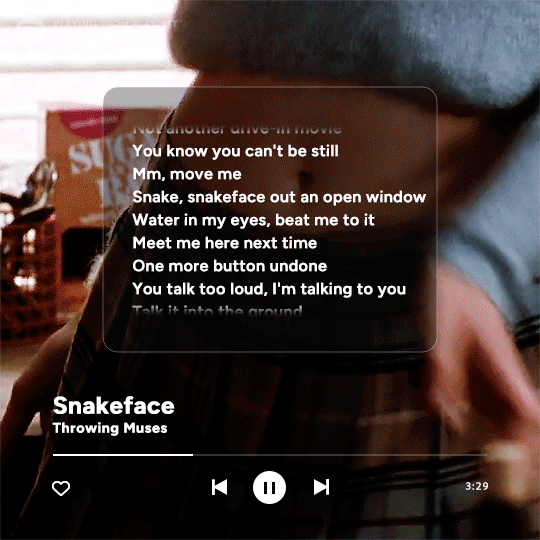
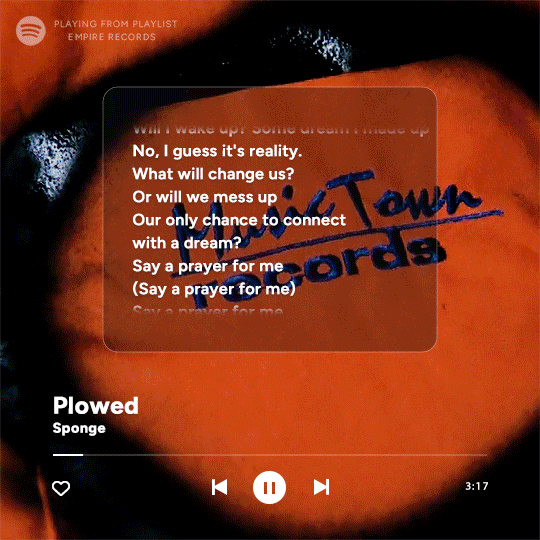
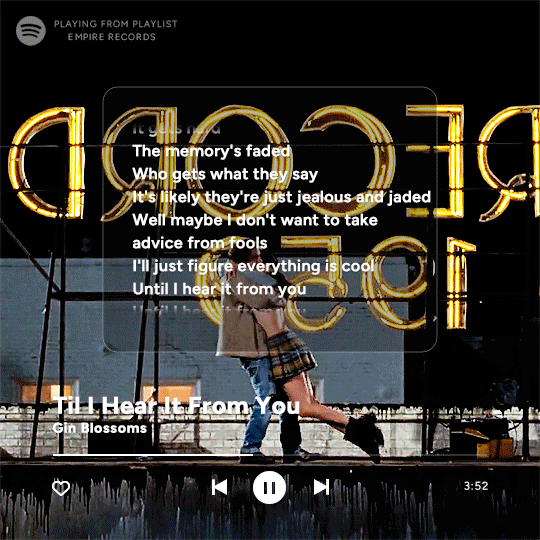
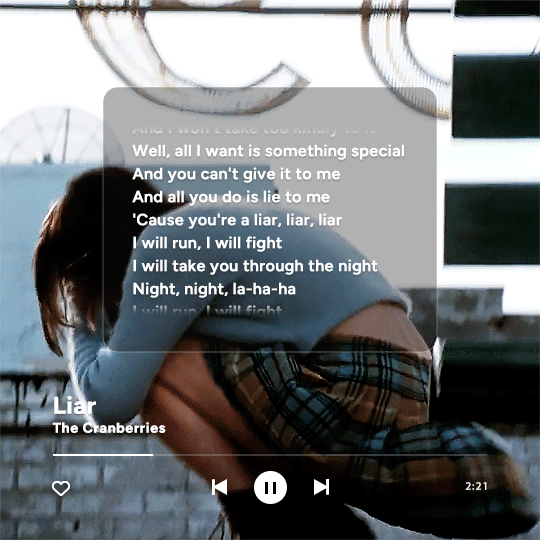
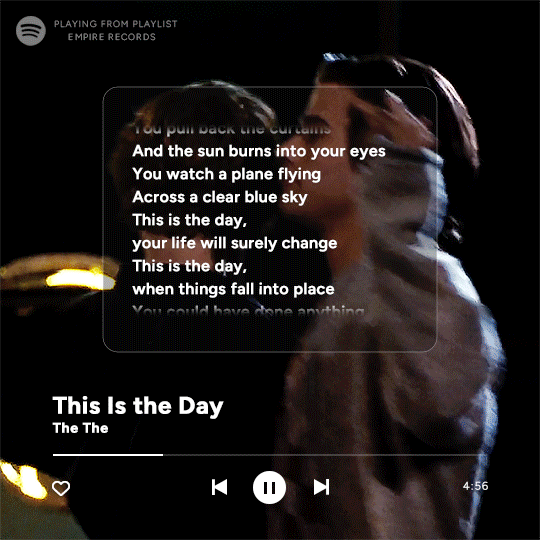
empire records + soundtrack
spotify template by @uservalerian
209 notes
·
View notes
Text
The Music of Jedi: Survivor
Last night I went to the Grammy Museum for an event celebrating the Jedi: Survivor score! Sometimes living in Los Angeles has its benefits. It was an evening with composers Stephen Barton and Gordy Haab, as well as their recording engineer Alan Meyerson, moderated by Jon Burlingame. I took copious notes throughout so I could share them with you all :) All quotes are paraphrases, I’m not that quick a note taker.


My husband and I settled into our seats, me vibrating with excitement as the lights dimmd. I was already hyped to hear the composers talk about my favorite game and their process for scoring it, but then my jaw fell out of my head because who strolled up on stage but fucking Cal Kestis himself, Cameron Monaghan, unexpected and uncredited on the event description.


I almost rolled out of my chair. Then I frantically started smacking my husband (who’s never played the game, but loves music and production) and hissing “it’s him it’s him it’s the Jedi!!!”
Cameron’s intro was brief but lovely. He introduced himself, then paused and said something like, “Do you hear that? That’s the sound of silence. That is awful. I can hear my own thoughts! No one wants to play a game like that. Which is why we have these guys!” He introduced the composers, Stephen and Gordy, as well as the sound engineer Alan and the moderator for the event, shook their hands and exchanged some hugs, then sat down in the audience. Giddily I returned to my notes as Jon led the discussion.
Q: How did you get into scoring video games?
Stephen was a gamer and had always been interested in working with video games. They were “enticing” and the schedule was much more appealing than for TV, where you might be handed a script and told to get the music back in a few days.
Gordy hadn’t worked particularly in games before.
Alan has been mixing and engineering video game soundtracks for the past 25 years, like Gears of War.
Q: What’s the difference between scoring a film and scoring a video game?
For film, it’s adding music onto what already exists; often the composer isn’t involved until the last 6 weeks or so of production. (Fun fact I learned earlier this year, Ludwig Goransson was involved from the start on Oppenheimer because Christopher Nolan specifically wanted to subvert that.)
The film is fairly static by the time the composers get their hands on it, so things are unlikely to change.
Video games are more like trying to put clothes on someone running a race, because drastic changes can happen at any time. The timeline is also greatly extended — 2-3 years is common — so things may evolve and shift drastically in that time.
Film is also much less volume of music… they wrote an entire 8 hours!
Q: Is there a Star Wars music “house” style?
Initially Star Wars projects outside of the original trilogy were often scored as if they were B sides to the original soundtrack. But the aesthetic is evolving. There are a few standards though — there must always be that symphonic scale.
The score was performed at Abbey Road. Alan mentioned that he was actually there on 9/11 working on a movie about a terrorist attack. Stephen loves recording at Abbey Road so much he and his wife named his daughter Abbey. All three of them agreed that Abbey Road is magical and the orchestra practically blends itself; for choral performances, all you have to do is stick a couple microphones in there and they sound fantastic.
They played a clip of “Dark Times,” with gameplay footage intercut with the symphony performing at Abbey Road. They explained that they wanted to develop a new theme for the Empire. At this time, the Empire just is. You can’t use the Imperial March, because the Imperial March is how the Empire perceives itself. But how does Cal see the Empire? It’s dark and ominous. It’s everywhere. It’s a fact of life.
Gordy explained that they literally shaped the melody like the sinus rhythm of a heartbeat to indicate that Cal’s on the run, his heart always pounding, never safe. They used a full 12 tone chromatic scale to keep the track always uncomfortable and unsettled.
Stephen is such a Merrical shipper! He talked about how one of the central conflicts of Survivor is Cal struggling with his feelings towards Merrin, and what do you do when you’ve utterly lost the fight? He pointed out what the Senator tells Cal, and calls him a pretty reasonable guy. Do you stop fighting when you’ve clearly lost? “Maybe Cal should go shack up with Merrin somewhere and have a nice life.”
Q: What is it like having so much funding for the score on a game like this?
All you can really sell now is quality, and people expect it now.
Q: What is the process like?
They are brought into the game in the script phase, where they may see some concept art and get to read the script to help determine the story beats.
The collaboration is joyful! It seems like it could be really scary, to have game play testers, the game designers, and other music folks all weighing in on how the score is working or not working, but they actually really enjoyed it. They’ll usually do about half the music, then have people test play it for a few months, come back with notes, and then work on the remainder after seeing what worked and what didn’t.
They played “Flight” in its entirety with gameplay of Cal and Merrin outrunning the Trident, and talked extensively about our girl Merrin! Stephen talked about how in JFO, Merrin was important but not as big of a player. Now in Jedi: Survivor, Merrin is vital,and we can see her story arc take shape. Her small motif in JFO was expanded into an epic, heroic scale after we see her power with portals and moving on the wind. They reached for all kinds of wind instruments, from Alpine horns, Tibetan horns, and even the “most tasteful vuvuzela ever.”
Note: it’s almost as heart-pounding to watch that sequence on the big screen as it is to play it!
They both said that some music flows onto the page and is easy to write; the escape from Jedha sequence was not one of those! It wasn’t easy to write, mix or play! A hundred people worked on this song, and it was hard as hell. The orchestra musicians kept coming up to Alan and telling him they loved playing it because it was such a challenge.
They don’t always tell the studio who wrote what. They work well together as they both love bourbon and coffee! Stephen says he’s great at about ¾ of the tune but not the ending, whereas Gordy can fix that up in a jiffy. They also sometimes divvied things up by planet or emotional beats.
Q: I noticed in this last song (“Flight”) there was a choral element. How do you decide when to incorporate choir instead of synth choir?
Choir is often the first casualty of budget cuts since it’s so many people involved. Sometimes, synth choir is chosen for just a vibe or an extra layer.
However, there’s a rule that in musicals when the emotion is building to a point that words can no longer contain them, that’s when a character must burst into song. For a score, when the emotion is swelling and can no longer be contained by mere instruments, that is when to pull out the choir. So we see it in “Flight.”
Me: We also see it in “Rage,” muahahaha.
They used 120 singers for Flight and only needed 3 microphones because of how good Abbey Road sounds.
They prefer amateur choirs to session professionals since you can sometimes have too-professional singers trying to out-sing each other, and amateurs are usually more relaxed.
Q: There were a number of unusual or even invented instruments used for this score, tell us about them.
Gordy made bottle chimes. He accidentally dropped a bottle of water while playing tennis and a ball pinged off it, making a lovely sound. He ordered 20 metal water bottles and strung them in a wardrobe rack with different amounts of water in them. Because it took ages to make, they used it in loads of places in the score.
Stephen went nuts and ordered 200 containers of BlueTack for the pianos for Koboh. They wanted Koboh to sound like the old West, but not that spaghetti Western honkytonk piano sound. If you make BlueTack into a sausage shape and roll it around a piano string you can make it make these strange broken sounds sort of like a gamelan. This is called a prepared piano. The low bumbumbum noises when first getting on Koboh and meeting the pit droid? Freaking piano. I would have never guessed! They did this to 3 pianos.
They played a clip of Where the Nekkos Roam. They used the prepared pianos, an orchestra, dulcimers, Basset horns, euphoniums, tubas. They wanted Koboh to feel lived in and to have history expressed in the music. The musicians were excited to have to rent out Basset horns since like nobody actually owns one.
Q: Tell us about the cantina music.
The original cantina brief from George Lucas to John Williams was apparently, “what if aliens came down in 1000 years and found sheet music from Benny Goodman, but didn’t have the same instruments?” And thus we got the Mos Eisley cantina theme which is almost unbeatable.
They were thinking of scoring the cantina music themselves, but then thought, “what if we gave that brief to a bunch of really cool bands?”
They highly recommended Dan Mayo from Tantran. They recommended taking a few hours to watch him kick ass on the drums on YouTube.
Tantran recorded "Fields of Dusk" for the cantina first, then Stig came back and said “what if we wove this into the score? What if it was Cal and Merrin’s love theme?” Then they created a symphonic version, also partially inspired by a Joni Mitchell song.
They played part of the cantina version of “Fields of Dusk,” then they played the symphonic version with Cal and Merrin riding the spamel to Cere’s base. They gushed about being able to work with the story and the subtext.
Alan said that "Fields of Dusk” “is visceral. It vibrates shit inside of you. Mixing it was a highly emotional experience for me. Even now sitting under the subwoofer — it’s right here, over my head — it’s very emotional.”
Q: How many motifs do you have?
“Seven thousand.” - Stephen
Gordy later amended that to about two dozen, but with tons of variations.
Q: What are the interactions like with the game developers?
They get to be in the building with them, working on the narrative team — making sure to serve the story first. It also lets them practice gameplay or watch others playing to see how it flows.
Again, it’s a 2-3 year process.
They played the clip of Cal and Merrin making a campfire in the cave on Jedha. Stephen is all about the Merrical ship (not that he used those words, alas, but still)! He said this was such gorgeous writing, really allowing the technology to showcase the acting, and it’s his all time favorite scene in the game.
The whole theater clapped as he said that. Yes! A whole theater clapping while someone was talking about Merrical and calling it gorgeous. *sobbing forever*
Q: What has it been like to meet fans?
They’ve been delighted by the fans and how much they love the characters and the amazing performances of all the actors in the game.
Q: Are there plans for a sequel?
Stephen: “Are there Lucasfilm snipers out there? Look for the red dot…”
Gordy: “There’s not NOT plans.”
Fan questions!
Alan mentioned he loves doing the hardest piece first! Then it’s all skiing downhill.
A fan asked about more weird created instruments.
They also used a bunch of bamboo smacking other pieces of bamboo, as well as using little drums from other purposes or sets.
Was there anything they messed up or wanted to do differently than they did in JFO?
They accidentally didn’t loop music in the hangar on Zeffo, so if you stick around there for more than 3 minutes, it just becomes wind sound and gets very lonely. A live streamer was playing the game, talked to his audience for like 10 minutes, then wandered around almost in silence as his fans commented “why is this game so quiet?”
Gordy wanted to make JFO sound much darker and got his wish in Survivor.
I had so been hoping they would talk about “Rage” and the struggle with the dark side, but they were sort of avoiding spoilers. So when they got to the Q&A I had to speak up.
I asked, “What was it like working with darker themes later in the game, like with Rage? You see a real shift in the motifs and there’s also more amazing choral work.” Their faces seriously lit up XD
Stephen said this was one he handed to Gordy because it was very difficult.
Gordy said that this is Cal at his worst, so it had to be so over the top. Think of consonant sounds crashing through the melody, Cal trying to keep control of his thoughts but they’re twisting away, he’s trying to think straight and can’t. It’s discordant. It’s also scored to evoke a heartbeat throughout, like breathing.
It was so hard for the choir to do, going back and forth — you can’t do that with choral samples or synth!
They ended with a video they played from their Hollywood Bowl show in June, and said we were only the second group of people to see it. They played a clip where they do use the classic Imperial March, but contoured so you only get the silhouette of its shape, instead of the full sound. It ended with a clip of the Tantran band playing a wicked awesome set out in the desert. The last image they showed was a list of the 287 people who worked on the score!
We let out and I did get to meet them! Stephen was lovely and I told him it was just such a beautiful, haunting score. I actually had a sketch of the campfire scene with me and he signed it! His daughter Abbey is an artist too and she was really impressed by my sketchbook (she looked to be about 11). Gordy also got to see a bit of my sketchbook and signed Cal in Nova Garon! What an awesome night! We didn’t see Cameron again but I was so astounded to see him the first time I didn’t mind at all.
SO COOL! Sometimes, kids, living in Los Angeles isn’t so bad!!

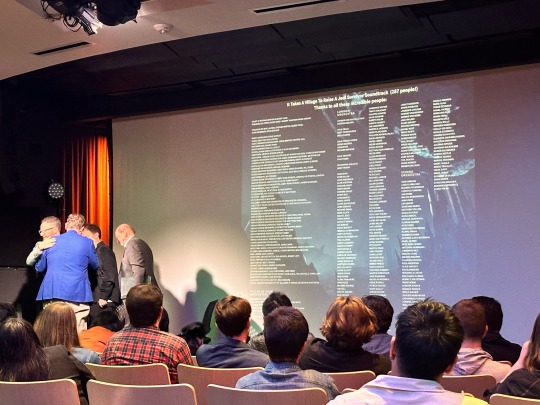


#jedi: survivor#cameron monaghan#cal kestis#gordy haab#stephen barton#alan meyerson#grammy museum#jedi survivor#jedi survivor spoilers#jedi: survivor spoilers#my jedi posts
87 notes
·
View notes
Text
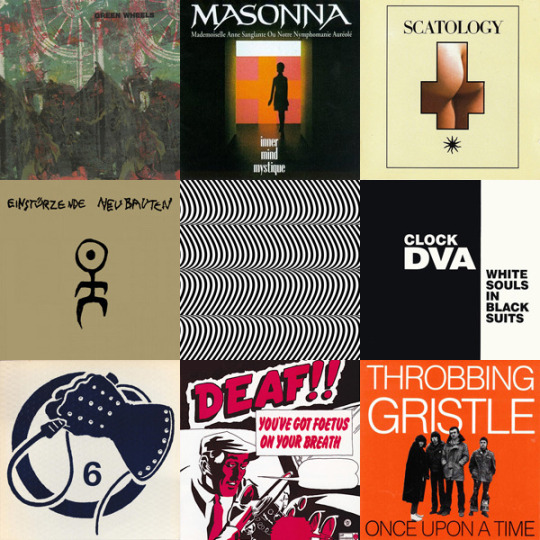
Rioux, 1999.
Post-Brentwood was a turning point in my life. The minute I heard Sick Of It All played at Drew’s (♀) graduation party was the very minute my music tastes would change forever. As an Eighties’ kid, I grew up on Duran Duran, Run DMC, Alisha, Lisa Lisa & The Cult Jam, Poison, and other chart-toppers. Anything could be ‘pop’ if it becomes popular enough. That’s how it got its name. Pop set me up to be diverse person I am now with stations like New York City’s Z100 where there’s a new market trend manufactured and released every five years to be fed on by the majority.
“Maladjusted” blasted through her backyard boombox for all of fifty of her closest friends and classmates to hear; the same friends and classmates who laughed at me or ignored me for being a poser. They weren’t laughing or shit-talking behind my back now that they saw me at Drew’s get-together. “How did he get in?” they wondered. That didn’t matter. They didn’t say shit to me. I never saw most of them again after that, nor did I keep tabs, either. I asked Drew who they were and she told me. Boy, did it go down angry and aggressive. I didn’t hear anything like it. So I went to the South Shore Mall’s record store and copped Scratched The Surface on cassette to quickly become my go-to record during senior-year summer. That was my introduction to hardcore and the start of something more personal and relatable than what I listened to before.
Shortly thereafter, Wipeout XL came out for Playstation and my trajectory in taste had changed for a second time. It was one of the first games released that had a major soundtrack thanks to disc capacity. A line-up of Underworld, Fluke, Photek, Future Sound Of London, The Prodigy, and Chemical Brothers gave me a three-month head start before - you guessed it - pop and alternative rock stations jumped on that wagon as the next great profit maker. Even stations changed their formats for a night or two to keep up with the hottest trend of the year, such as when Atari Teenage Riot slipped through the airwaves and literally changed my attitude of music. Another hand would be dealt, and one which was the most fascinating: industrial. Mortal Kombat motion picture soundtracks were the gateway to it after establishing Nine Inch Nails, Filter, and Ministry as my Big Three. I snatched up on three Meat Beat Manifesto tapes, four Skinny Puppy discs, The Wax Trax box set and label mail order, and some Cleopatra label compilations. (Yeah, I know. No need to tell me.) It all goes to show how a lot can happen in one year before heading to community college.
Whether or not I had employment, I still managed to purchase tons of music. It became a beast I constantly had to feed. I had record store visits, radio, magazines, and now the internet (‘world wide web’ they once called it) to keep me updated. Every week I found something new to check out. Oh, look. Alec Empire is on the cover of another magazine! The December 1997 issue of Wire, #166. Have to buy it as his stock was riding high with (once again) Atari Teenage Riot and his DHR label. On the way to Empire’s glow-up were two other artists I came across in their pages: Autechre (who they proclaimed as noise gods) and Merzbow.
When you keep hearing the same names over and over, eventually they’ll get you to check them out. That’s what happened with those two and with expectations - what you shouldn’t have when diving into an artist or album. Autechre’s Tri Repetae++ caught me off guard. They said it was an electronic record and I foolishly thought it was techno instead. I hear the album opener “Dael” expecting a build-up leading to an explosion of sound. Wrong. The minimal structure and complex melodic rhythms of a cold, mechanical, emotionless being started as-is and moved its way to the end. This wasn’t anything to a traditional dance record I was accustomed to. No. These were experiments that Sean Booth and Rob Brown created which were so innovative that they’ve gotten endless praise for them since. A few listens later and I had Tri Repetae++ on constant repeat.
Merzbow? That’s another story. Like Tri Repetae++, I bought Pulse Demon at the Port Jefferson Music Den, once a bastion of everything obscure which hasn’t existed in 20 years. That was my introduction to noise. Fucking Lady Godiva riding on a Sybian did I not know what was in store for me that day. It was the shiniest and sharpest-sounding thing I now had in my collection. I load the disc in, pressed play and - what?! It was one giant maelstrom of harsh white noise, produced and output louder than usual, complete with Bridget Riley-esque op-art and its silvery prismatic sheen. Pulse Demon was devoid of any rhythm, melody, beats, measurements, sound structure, tonality, vocals, or even a sense of time whatsoever. It was a giant endurance test that felt like there was no end in sight. Again, expectations are a foolish thing to ask for.
I didn’t know what to think. I immediately dismissed it and never played it again. I couldn’t say I was actively disappointed or put-off but rather dissuaded. It was nothing what I experienced. Back then, I was a feature writer for the student paperduring my disastrous time at community college’s middle campus. The campus majority consisted mostly of shallow club-goers and superficial people who stood in their safe comfort zone of basic dance music, fashion, and friends who judged and dismissed anyone who were weird or different from them. I always went against the grain and reached for something different and challenging; things that loudmouth belligerent chauvinist Opie & Anthony fans were too stupid to learn from. I had no other albums to review on the backburner, so Pulse Demon was it for the following issue. I was honest about my take on it: it was an unlistenable mess of a joke. I handed in my 1,000 words to our features editor, a long-haired burnout held over from the hippie generation, and it finally saw print in one of our Spring issues.
The day after my review came out, I was called in to the office by my editor-in-chief Phil. Somehow we got word from a professor who read my article and took issue with it. “Really?” I said. But it didn’t stop there. Phil also told me that Professor Rioux wanted me to visit his office to discuss the article with him.
I failed an article for a professor I didn’t even know I had?
Phil had him for English. But not to fear. The overall consensus was that he was friendly, calm, and reasonable with his students. And here was an odd moment he shared with me: Pfr. Rioux played some of his favorite weird music during an end-of-the-semester holiday party for his students to hear. Seriously, not to fear. He sounded like someone I would connect with. Phil assured me that all would be fine and ended up arranging a time and day to meet up with him. That would be next week Wednesday after the publisher’s meeting.
I arrive at Prf. Rioux’ office where he welcomed me in and introduced himself, dressed up in the usual teacher’s attire of blazer and dress pants. So far, so good. I sat down in his office and looked around to notice two rows of tapes sitting on a desk next to his bookshelf. There was a Temple Ov Psychick Youth cross hung up on the wall and also noticed the black shirt he was hearing under his blazer which featured Aube’s Quadrotation on it.
We sat down for a good 45 minutes discussing my article. Not once was Prf. Rioux mean, belittling, or off-handed - unlike others who called themselves ‘professors’. Rather, he gave me constructive criticism. Judging by my article, he told me that I missed the mark on Merzbow and didn’t come into the album open-minded. Clearly I didn’t understand noise music enough for me to write what I did and there was way more to it than I thought. The most important takeaway was that I shouldn’t have compared noise to anything else in a traditional sense. Sure, it was an entirely different animal that can still have value, substance, a structure, a methodology, and a meaning to it all like everything else.
So he kindly offered to make me three cassettes of whatever rang familiar and whom I was curious about to widen my horizons and get a better understanding. All early industrial and / or noise. Wonderful. I obliged. One week later, I returned to his office where he had them all ready for me. I thanked him for the tapes and said goodbye to him.
What was on those tapes? First, Merzbow. Not surprisingly. Three unknown tracks from the Lord of Harsh Noise. On the other side was Masonna, another Japanese noise artist whose Inner Mind Mystique finished up tape #1. Tape #2 was more varied. I heard very little of Coil other than “The Snow” off the Wax Trax compilation. Right after that was Jim G. Thirwell / Foetus whom followed up with three tracks. (Coincidentally, both aforementioned artists remixed Nine Inch Nails). Rioux threw on three tracks from Einsturzende Neubauten’s Kollaps with a small sampling of Clock DVA tracks from Black Souls In White Suits. Our final tape had a good ten tracks of Death In June whom I never heard of, and several versions of Throbbing Gristle’s “Discipline” rounded out all that Prf. Rioux gave me. Never had I received anything like it from any professor.
I was forever grateful. I played those tapes to good use, enough to go back into my usual grind of music and artist reviews with a better understanding and reasoning. I didn’t review any of the artists after that Merzbow debacle, but my stance of him changed for the better and went back to Pulse Demon several more times. I happened to purchase several more of his albums where I could, dove back into Inner Mind Mystique and picked up on Nic Endo’s White Heat when that was released. I pushed more heavily into Einsturzende Neubauten’s chaotic phase, Clock DVA’s experimental era, and the world of Throbbing Gristle. I would be only toes deep with the other artists; checking in from time to time.
What were the chances that anyone (who appreciated the genesis of industrial and a knowledgeable noise fan) would notice a specific artist printed in a campus newspaper no less? It was bad enough that I dealt with one disappointment after another interacting with people and trying to find my place on campus; which I eventually did with neutral results. Where reaching out to people with similar tastes in music were few and far between (only one or two people on campus wore Dead Voices On Air, Ant-Zen, and Ras DVA shirts), someone reached out to me instead. Of all the professors I ever had, no one and I mean no one had that kind of knowledge that Prf. Rioux did, with mixtapes to boot, too.
As his tapes played in my Walkman while trekking around campus, everything else around me was happening as usual. Cover bands and boring flavorless local bar acts peppered the Long Island music scene. WBLI continued to pump out more puerile paint-by-number club mixes as usual with Fatboy Slim and Robbie Williams up next. Ska fans hopped out of the woodwork to defend their precious circus music and became overnight know-it-all elitists ready to play the scene-politics card. And free pink PVC cowboy hats came included with Pamela Anderson, Britney Spears, Christina Aguilera, Spice Girls, and Limp Bizkit worship. Forget it. The late Nineties was clearly a bad era in music and pop culture - and it still had time to get even worse. The only places of solace I had were the few record stores I frequented. Commack’s Cheapo’s, West Babylon’s Looney Tunes, Central Islip’s Mother’s Music, Port Jefferson’s Music Den, and Centereach’s None Of The Above. At least they catered everything to my choosing.
But I never forgot where I came from or lost track of where I headed. By the time I attended Stony Brook, I fell victim to the Mothers Of Noise ‘scandal’ and discovered Prurient from it. I’d be one of the few on campus familiar with Whitehouse, Boyd Rice / NON, and even Lou Reed’s Metal Machine Music on top of everything else.Each and every one of these artists were mentioned in my new wave of reviews and I even featured on my radio show. I also never forgot those tapes. I still have them, and they became one of the few shining reminders of an era that was mostly ill to me.
Cassette #1, side A:
Merzbow: “???”, “???”, “???”
Cassette #1, side B:
Masonna: Inner Mind Mystique
Cassette #2, side A:
Coil: ”Panic”, “Tenderness Of Wolves”, “Clay”, The Anal Staircase”
Foetus: “What Have You Been Doing?”, “Today I Started Slogging Again”, “Gums Bleed”
Cassette #2, side B:
Einsturzende Neubauten: “Tanz Debil”, “Steh Auf Berlin”, “Kollaps”
Clock DVA: “Consent”, “Anti-Chance”, “Uncertain”
Cassette #3, side A:
Death In June: “Hello Angel”, “Heaven Street”, “She Said Destroy”, “Fall Apart”, “Leper Lord”, “C’est Un Reve”, “Touch Defiles”, “The Torture Garden”, “Come Before Christ…”
Cassette #3, side B:
Throbbing Gristle: three live “Discipline” performances.
#industrial#goth#neo-folk#darkness#personal#Long Island#omega#music#playlists#mixtapes#wow#whoa#oh my#Merzbow#Masonna#Coil#Foetus#Einsturzende Neubauten#Clock DVA#Death In June#Throbbing Gristle
8 notes
·
View notes
Text
Empire Records is one of the most underrated films of the 90's. I know that the film was riding the coat tails of the popularity of music groups like Nirvana, Pearl Jam and the slowly going back underground of the alternative music scene. It has a great soundtrack and I am still listening to it even now in the 2020's.
7 notes
·
View notes
Text
ahshowka breakdown! tagged #ahsoka spoilers and #ahshowka
the good:
when i tell you i almost stood up and cheered during the memorial ceremony. i could feel the great cosmic energy surging through my VEINS, senator jai kell and clancy brown and UGH. thank GOD
relatedly, i really liked having hera be the first person to say his name. idk. it felt nice and in character that she still thinks of her crewmember-cum-son-and-boy
i, for one, am really, really really digging the slow, deliberate pacing. time will tell if it ends up more plodding than contemplative, but i love having the space to breathe and observe... almost like a jedi? lol, but mostly i'm happy not to be taken on a roller coaster
kiner bros putting their whole pussy into the soundtrack
EMAN ESFANDI ON THE RECORDING WHEN HE DOES THE LITTLE HEADSCRATCH i was like yes. yes. this man understands
showing sabine's helmet in the foreground and having her twice avoid it to pull out other stuff from under the table. i have so many thoughts
man i love that they're all kind of bitches to each other. i support unlikable women
huyang: man you suck ass at this whole force thing, huh
the... less good:
ignore the makeup ignore the makeup ignore the makeup
i'm interested to see the show tackle the idea of how to transition from empire to republic, and i think it can be a salient critique of capitalism to have the republic essentially absorbing the imperial workforce so as not to stop production, but i am, as always, skeptical, since LF has uh... not been great about this before (i mean narratively, not even like getting into unfortunate implications lmao)
utterly bored with we-have-asajj-ventress-at-home and the other dude (rip ray stevenson tho, what a phenomenal talent) but i'm hopeful that will change!
dreading thrawn just bc i hate thrawn but that is entirely personal and not at all a critique of the show 😂
seated and watching:
i am extraordinarily interested in the sabine/ahsoka dynamic, and i am dying to know more, because it really is reading like a nasty lesbian breakup. which i am totally okay with
i am less... concerned? wary? of sabine as ahsoka's apprentice than i was before we started. idk, given all the visual emphasis on sabine avoiding these two "opposed" poles (avoiding the jedi by not going to ezra's memorial, avoiding the mandalorian by shoving her armor away under the table) i am curious to see how this plays out. it feels like a natural evolution from her rebels arc of choosing her new family in the ghost crew, but inverted? which i'm interested in. idk. feeling hopeful, tho
there's an interesting motif of seeing things through (and failing to do so) in these first two episodes. obviously ezra says that to sabine almost verbatim, but there's also ahsoka walking away from both anakin and sabine before training was completed, there's the new republic failing to fully eradicate imperial sympathies (sometimes deliberately so), and there's something there too, i think, about failing to confirm thrawn's death. or account for his return? anyway. i'm interested
but truly, highlight of the premiere is huyang being like good god you are bad at this
18 notes
·
View notes
Text
Pokémon Scarlet and Violet are giving Atlantis: the Lost Empire

In Hisui and Sinnoh, I went on about mountains. Paldea's main geographical feature is potentially a reference to real-world mythos as whale. In Paldea, the biggest feature in the centre of the region is the great crater/Area Zero. When I was playing this game and going into the crater, it reminded me a lot of one of my favourite Disney movies, Atlantis: the Lost Empire. In this movie, an expedition team descends to find treasure (a big similarity with the Treasure Hunt at the Academy), but the explorers only find the lost empire of Atlantis which preserved by the power of crystals that only exist down in Atlantis. This could be a big analogy to tera crystals, which originate from within the crater. The expedition team could bring the crystals from Atlantis with them when they returned to the surface; tera crystals could be brought to the surface in Paldea so people could use their energy to terastalise pokémon.
Another thing that stuck out to me was the way that in the movie for Atlantis: the Lost Empire, the empire fell due to the greed and desire of dominance/power of the king. Greed and desire were also the reasons why the Paldean Empire fell to ruin. Both rulers kept wanting more, which lead to the demise of both civilisations and, in Scarlet/Violet, the creation of four other legendary pokémon to embody the spirit of those who resented the greedy ruler's ambitions:
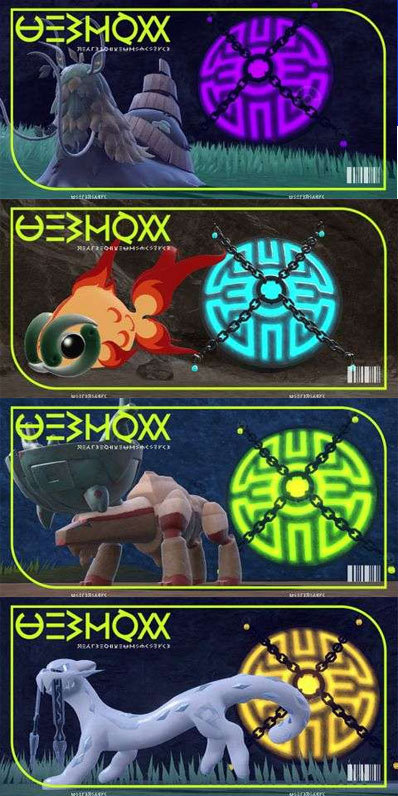
The Empire of Atlantis itself is something that originates from records of Plato, the Greek philosopher. The empire was physically submerged because of a great flood (perhaps as a punishment for the greedy king or the greed of humankind in general--who knows?) In his record, Atlantis was described as a technologically-advanced civilisation. This lines up with the way that AI which, according to Sada or Turo, exists, but only functions at the heart of the crater. Even if Sada and Scarlet are oriented towards the past, Sada's AI self exists suggesting that there are still some technological advancements that are unique to the crater.
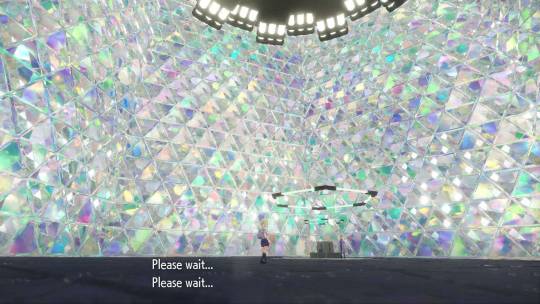

When the player descends into the crater and has the final showdown with Sada/Turo's Miraidon/Koraidon, the innermost room with the time machine is completely surrounded by crystals. This reminded me of the pivotal scene in Atlantis: the Lost Empire where the explorers discover the power source keeping the remains of the people and civilisation of Atlantis alive. At the heart of the empire is the crystal chamber (which has an epic soundtrack! https://youtu.be/EH8iRhEyg3M) In the movie, this is a life force that triggers a mechanism to protect the empire by summoning golems who generate "force fields" around Atlantis.
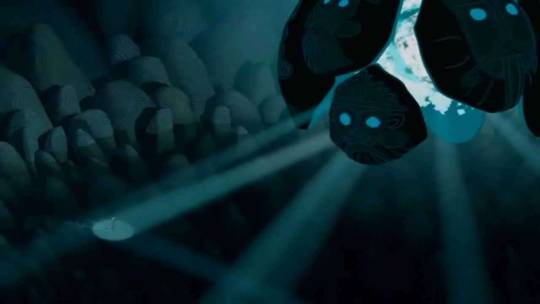
This YouTuber also draws direct links between Atlantis and the game. I wasn't the only one who was thinking, "this game is giving Atlantis..." The YouTuber shows in this timestamp (https://youtu.be/1JdOZDFzZmU?t=205) the actual text files for the game. when the player is in the crater, Arven, Nemona, and Penny will follow the player to the heart of the crater. As they walk around behind, they converse in text flashing at the bottom of the screen. In the game's files, Paldea is titled "Atlantis."

This is how Atlantis is described and one word stands out here:

Orichalcum Pulse is Koraidon's ability:

The last thing I will add is that the legend for Atlantis in the Atlantis: The Lost Empire movie was written in a book which was carried by the explorers. It described where it was, the language, the people, and served as a guide to all things Atlantis:

This is directly analogous to the Violet and Scarlet books. The book in the movie inspired the main character and his father to seek out Atlantis. The Violet and Scarlet books inspired Sada and Turo as children to build the time machine and research within the crater.
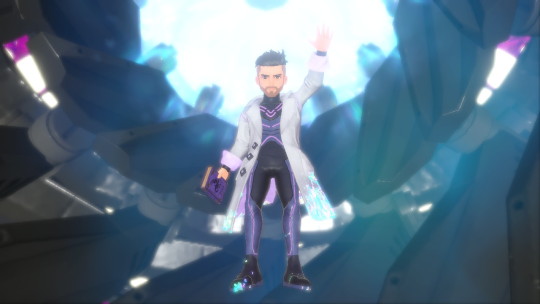
This leads me to wonder whether Geeta is going to be a Kida or a Roark...
#pokemon#pokemon scavio#pokemon theory#pokemon scarlet and violet#pokemon scarlet#pokemon violet#gaming#video games#professor turo#professor sada#paldea#pokemon paldea#atlantis#atlantis the lost empire#pokemon lore#pokemon thoughts#scarlet and violet
89 notes
·
View notes